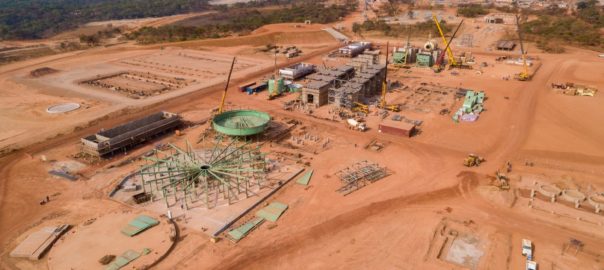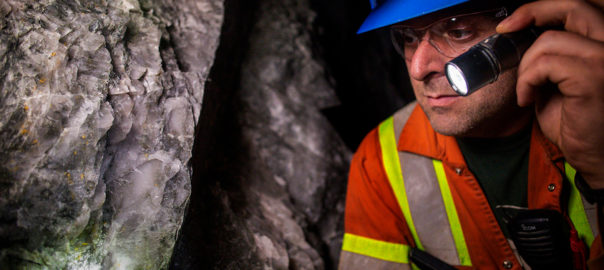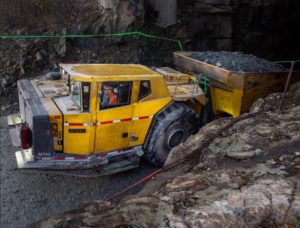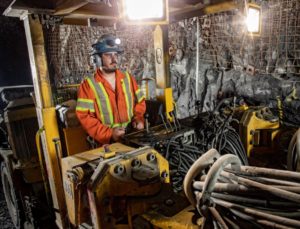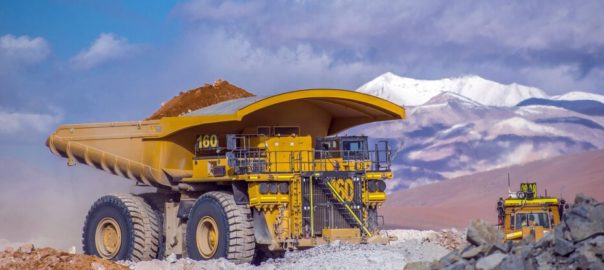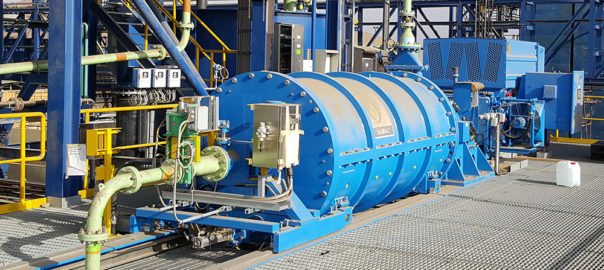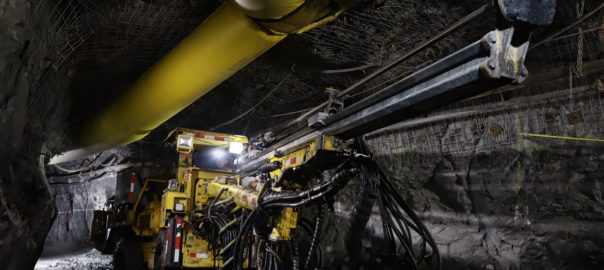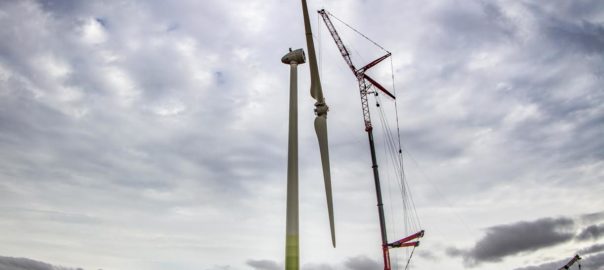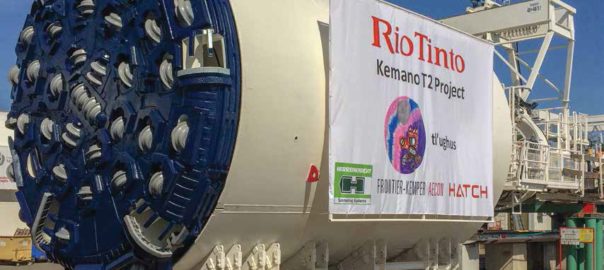The latest economic studies on Ivanhoe Mines and Zijin Mining Group’s majority-owned Kamoa-Kakula project in the Democratic Republic of Congo have indicated the asset could become the world’s second largest copper mining complex.
First production at Kamoa-Kakula is less than a year away, but the project partners have continued with a series of economic studies that emphasise the world-class nature of the orebodies within their control.
The headline maker is the results of a preliminary economic assessment that has evaluated an integrated, multi-staged development to achieve a 19 Mt/y production rate at the mine, with peak annual copper production of more than 800,000 t.
At the same time, a prefeasibility study (PFS) has been carried out to look at mining 1.6 Mt/y from the Kansoko mine, in addition to 6 Mt/y already planned to be mined from Kakula, to fill a 7.6 Mt/y processing plant at Kakula.
A definitive feasibility study (DFS) has also evaluated the stage-one, 6 Mt/y plan at Kakula, which is currently being constructed and is less than a year away from producing first copper, according to Ivanhoe Co-Chair, Robert Friedland.
While the operation looks to have the scale of a world-class asset, it will also have top ranking ‘green’ credentials, according to Friedland.
“The Kakula mine has been designed to produce the world’s most environmentally-responsible copper, which is crucial for today’s new generation of environmentally- and socially-focused investors,” he said.
“Zijin shares our commitment to build the new mines at Kamoa-Kakula to industry-leading standards in terms of resource efficiency, water and energy usage, and minimising emissions. We are blessed with ultra-high copper grades in thick, shallow and flat-lying orebodies – allowing for large-scale, highly-productive, mechanised underground mining operations; and access to abundant clean, sustainable hydro electricity to power our mines – providing us with a distinct advantage in our goal to become the world’s ‘greenest’ copper miner and be among the world’s lowest greenhouse gas emitters per unit of copper produced.”
The project recently retained Hatch of Mississauga, Canada, to independently audit the greenhouse gas intensity metrics for the copper that will be produced at Kamoa-Kakula.
The Kamoa-Kakula Integrated Development Plan (IDP) 2020, as the companies refer to it, builds on the results of the previous studies announced in February 2019.
DFS to 6 Mt/y
The new DFS incorporates the advancement of development and construction activities to date, and has once again confirmed the outstanding economics of the first phase Kakula Mine, Ivanhoe said.
It evaluates the development of a stage one, 6 Mtpa underground mine and surface processing complex at the Kakula deposit with a capacity of 7.6 Mt/y, built in two modules of 3.8 Mt/y, with the first already under advanced construction (see photo). It comes with an internal rate of return of 77% and project payback period of 2.3 years.
The first module of 3.8 Mt/y commences production in the September quarter of 2021, and the second in the March quarter of 2023. The life-of-mine production scenario provides for 110 Mt to be mined at an average grade of 5.22% Cu, producing 8.5 Mt of high-grade copper concentrate.
The Kakula 2020 DFS mine access is via twin declines on the north side and a single decline on the south side of the deposit. One of the north declines will serve as the primary mine access, while the other decline is for the conveyor haulage system, which was recently commissioned.
The primary ore handling system will include a perimeter conveyor system connected to truck load-out points along the north side of the deposit. The perimeter conveyor system will terminate at the main conveyor decline.
The mining method for the Kakula deposit is primarily drift-and-fill using paste backfill (around 99%); with the exception of a room-and-pillar area close to the north declines, which will be mined in the early years of production. The paste backfill system will use a paste plant located on surface connected to a distribution system that includes a surface pipe network connected to bore holes located at each connection drive on the north side of the orebody, the company says.
The Kakula concentrator design incorporates a run-of-mine stockpile, followed by primary cone crushers operating in closed circuit with vibrating screens to produce 100% passing 50 mm material that is stockpiled.
At the end of August, the project’s pre-production surface ore stockpiles totalled an estimated 671,000 t grading 3.36% Cu, including 116,000 t of high-grade ore grading 6.08% Cu.
The crushed ore is fed to the high pressure grinding rolls operating in closed circuit with wet screening, at a product size of 80% (P80) passing 4.5 mm, which is gravity fed to the milling circuit.
The milling circuit incorporates two stages of ball milling in series in closed circuit with cyclone clusters for further size reduction and classification to a target grind size of 80% passing 53 micrometres (µm).
The milled slurry is pumped to the rougher and scavenger flotation circuit where the high-grade, or fast-floating rougher concentrate, and medium-grade, or slow-floating scavenger concentrate, are separated for further upgrading. The rougher concentrate is upgraded in the low entrainment high-grade cleaner stage to produce a high-grade concentrate.
The medium-grade or scavenger concentrate together with the tailings from the high-grade cleaner stage and the recycled scavenger recleaner tailings are combined and further upgraded in the scavenger cleaner circuit. The concentrate produced from the scavenger cleaner circuit, representing roughly 12% of the mill feed, is re-ground to a P80 of 10 µm prior to final cleaning in the low entrainment scavenger recleaner stage.
The scavenger recleaner concentrate is then combined with the high-grade cleaner concentrate to form final concentrate. The final concentrate is then thickened and pumped to the concentrate filter. Final filtered concentrate is then bagged for shipment to market.
The scavenger tailings and scavenger cleaner tailings are combined and thickened prior to being pumped to the backfill plant and/or to the tailings storage facility. Backfill will use approximately half of the tailings, with the remaining amount pumped to the tailings storage facility.
Based on extensive test work, the concentrator is expected to achieve an overall recovery of 85%, producing a very high-grade concentrate grading 57% copper. Kakula also benefits from having very low deleterious elements, including arsenic levels of 0.02%.
7.6 Mt/y PFS
The PFS evaluating mining 1.6 Mt/y from the Kansoko mine envisages an average annual production rate of 331,000 t of copper at a total cash cost of $1.23/lb copper for the first 10 years of operations, and annual copper production of up to 427,000 t by year four. This comes with an internal rate of return of 69% and project payback period of 2.5 years, according to Ivanhoe.
Development would see Kakula-Kansoko benefit from an ultra-high, average feed grade of 6.2% Cu over the first five years of operations, and 4.5% Cu on average over a 37-year mine life.
There are currently two mining crews at Kansoko, in addition to the 10 mining crews (three owner crews and seven contractor crews) currently at Kakula, with the ability to increase this number to fast-track the development of Kansoko, Ivanhoe said.
19 Mt/y option
The Kamoa-Kakula 2020 PEA presents initial production from Kakula at a rate of 6 Mt/y, followed by subsequent, separate underground mining operations at the nearby Kansoko, Kakula West and Kamoa North mines, along with the construction of a 1 Mt/y of concentrate direct-to-blister smelter. The smelter section of the study saw China Nerin Engineering act as the main engineering consultant with Outotec providing design and costing for propriety equipment.
The Kamoa North Area comprises five separate mines that will be developed as resources are mined out elsewhere to maintain the production rate at up to 19 Mt/y, with an overall life in excess of 40 years, Ivanhoe says.
For this integrated 19 Mt/y option, the PEA envisages $700 million in remaining initial capital costs, with future expansion at Kansoko, Kakula West and Kamoa North funded by cash flows from the Kakula mine, resulting in an internal rate of return of 56.2% and a payback period of 3.6 years.
This shows the potential for average annual production of 501,000 t of copper at a total cash cost of $1.07/lb copper during the first 10 years of operations and production of 805,000 t/y of copper by year eight, Ivanhoe said.
“At this future production rate, Kamoa-Kakula would rank as the world’s second largest copper mine,” the company said.







